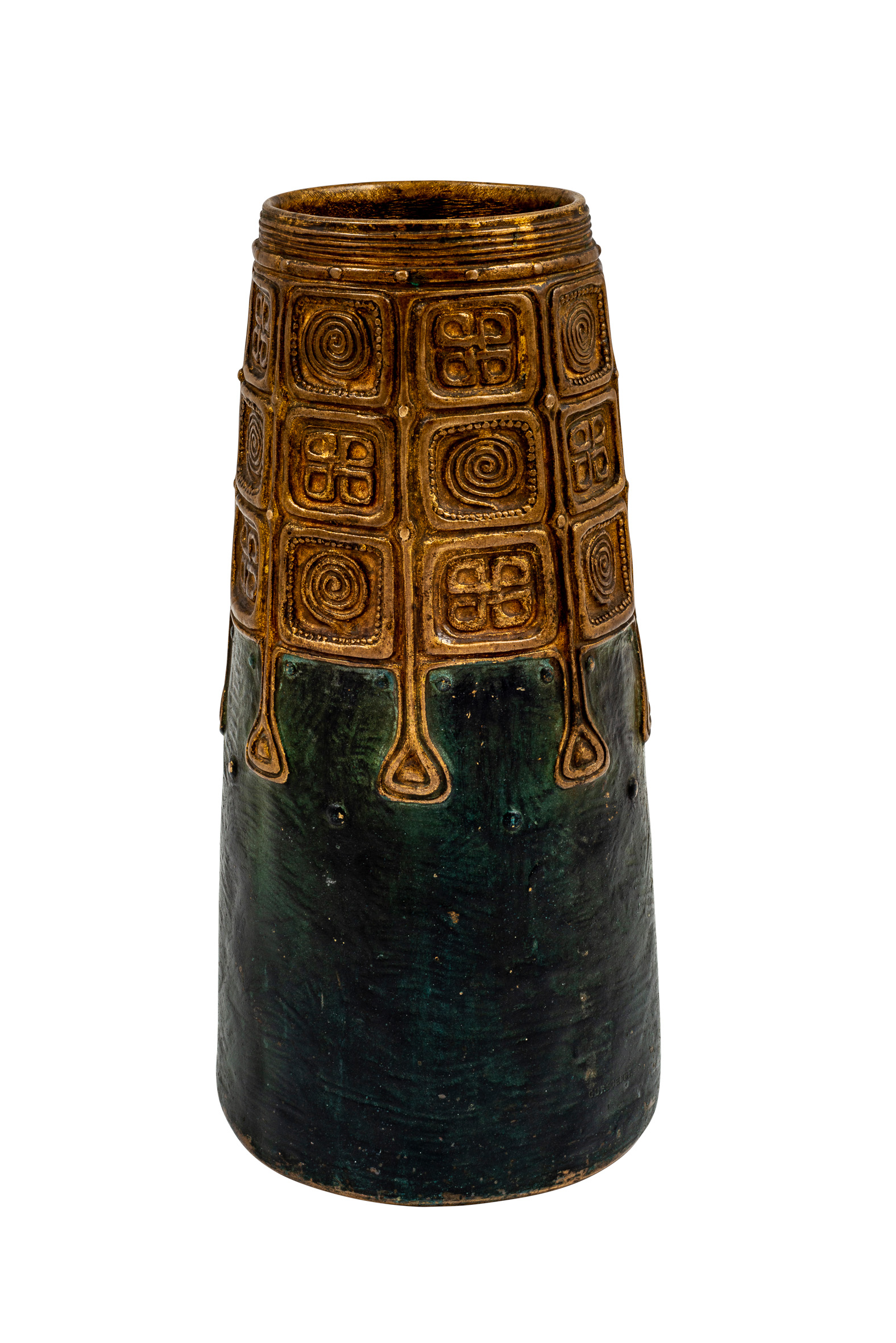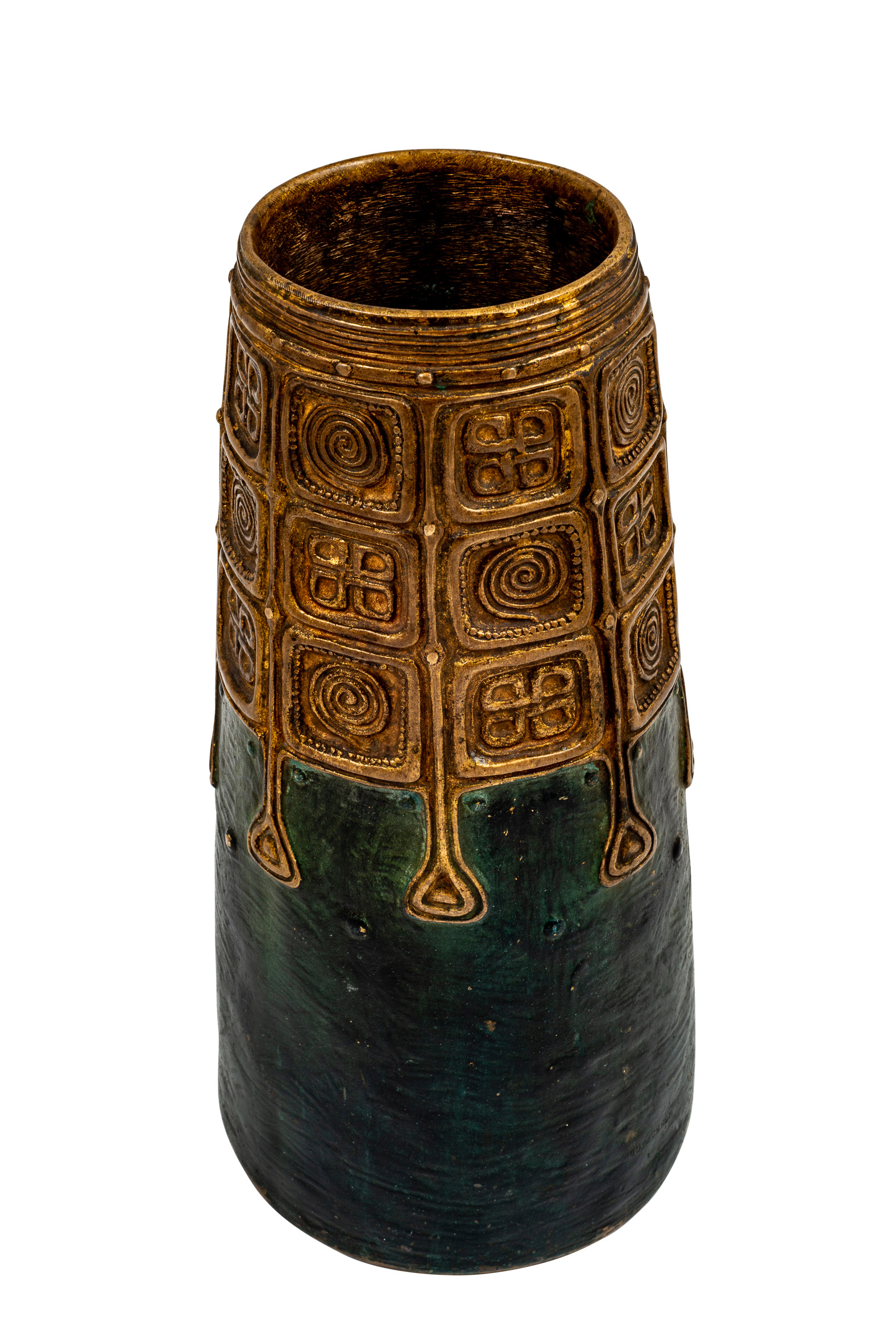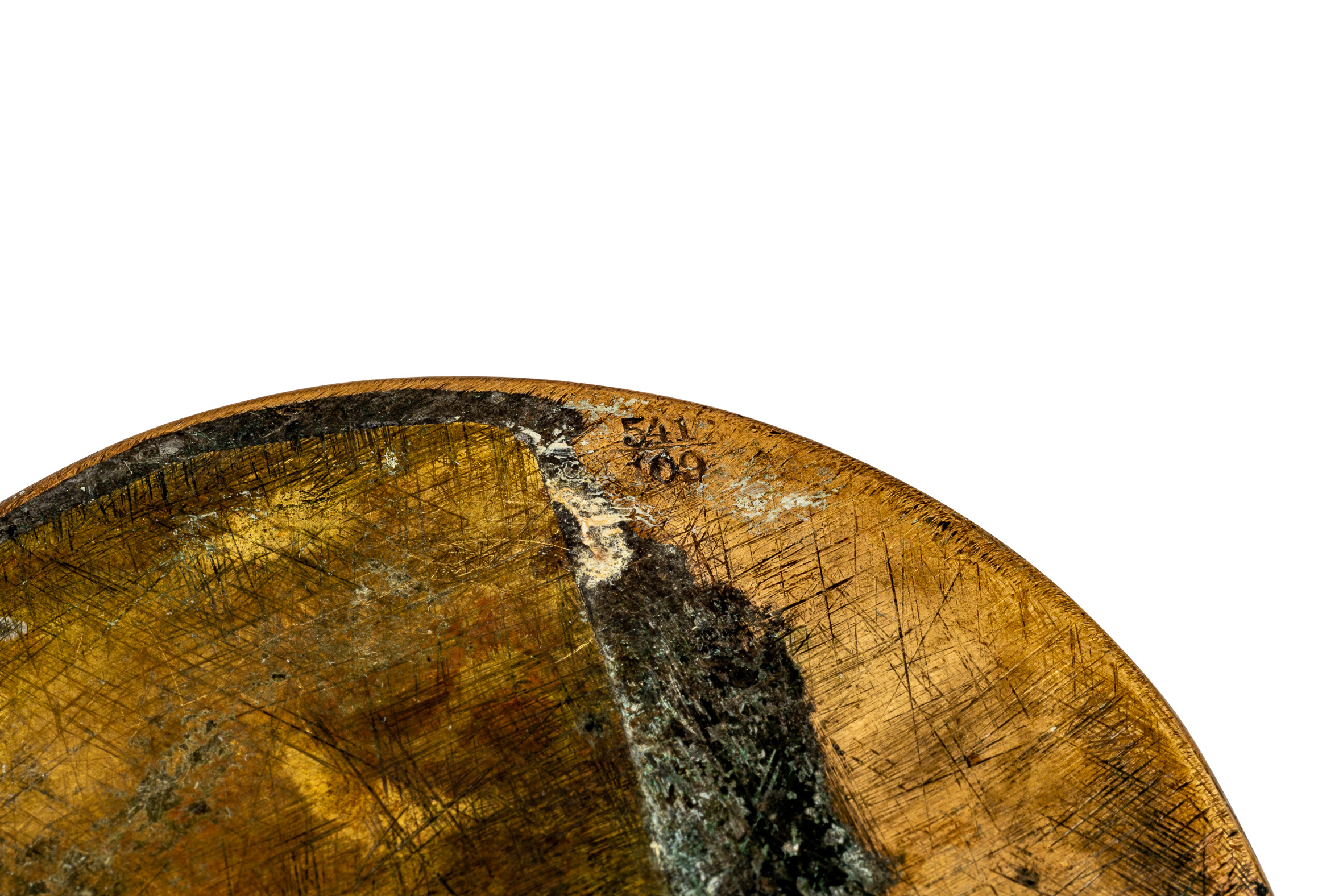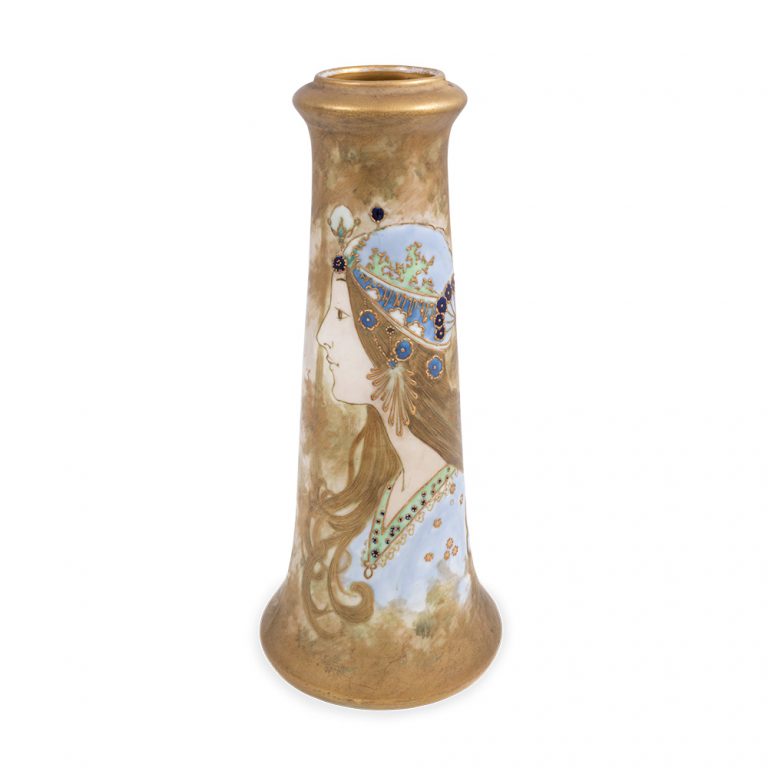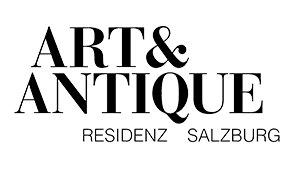Vase Gustav Gurschner K.K. Kunst-Erzgiesserei ca. 1906
Bronze vase with celtic pattern, Gustav Gurschner, K.K. Kunst-Erzgiesserei Wien, ca. 1906, signed
Signed with „GURSCHNER“ on the side and “514/109” underneath Gustav Gurschner catalog raisonné GG-1905008
Description
In the period around 1900, Austria experiences a change in arts and crafts. Artistic impulses from Great Britain become apparent and ornamentation influenced by Celtic culture starts appearing on decoratively designed utilitarian objects. Around 1906, Gustav Gurschner designs numerous vessels, which he skillfully decorates with symbolic or nature-related ornaments. This tall, tower-like vase is intricately decorated and bears Celtic symbols such as the spiral or the loop square (endless knot). There is an exciting contrast between the smooth surface of the lower part and the finely crafted relief of the upper part.
ARTIST
Gustav Gurschner (Muehlendorf am Inn, Germany 1873 – 1971 Vienna) is among the most famous Austrian sculptors of the 20th century. He was a founding member of the Vienna Secession and president of the Künstlerverband Österreichischer Bildhauer (Association of Austrian Sculptors). As he lived in Paris for several years, one can recognize a clearly French influence in his characteristic, nature-related style. His remarkable talent and his extensive artistic education led him to create a large number of monuments and portraits, including the royal obelisk in Veszprém (Hungary) in 1908, the imperial monument of Hohenelbe (Czech Republic) before 1916 and a portrait of King Edward VII of England.
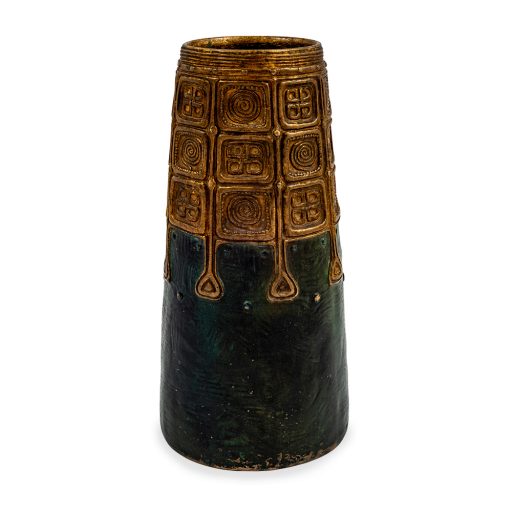
By sending the inquiry form, you accept the use of your data for this inquiry. Privacy Policy
1010 Wien
Monday to Friday: 11:00 a.m. – 7:00 p.m.
Saturday: 11:00 a.m. – 4:00 p.m.
and by appointment
Phone: +43 1 513 32 69
E-Mail: info@floriankolhammer.com



